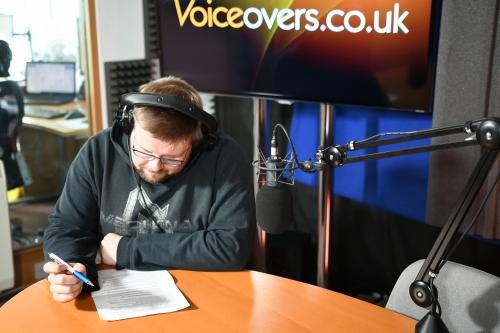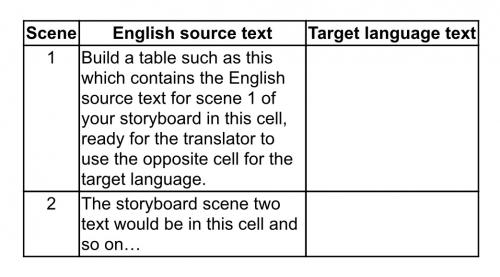How to create a localised animation with voiceover - Top 5 Tips
Now they’ve asked for you to create not just one version but five localisations (or localizations if you're in the US) – even better!
However, you’ve never done this before and you don’t speak the languages. The last thing you want is to come across all “Je ne sais quoi”, right?
We’ve got your back.Here’s our five step guide to help you avoid common mistakes.

Step 1. Get the script and voice recording signed off before you lock down the animation
If the client wants you to begin work on the animation as a proof of concept before you have your professional voiceover, perhaps you can record a guide track yourself to help gauge the animation timings? We'd suggest aiming for a pace of 150 words per minute for a corporate animation.
However, ideally, get the script signed off and the UK voiceover recorded first.
It’s handy to record just the UK voiceover first to establish the tone of voice the client likes. Once they’re happy with the English recording you can use that as a style guide for the other languages.
At this stage your client might ask to see the completed animation with the UK voice*.
We’ll cover how to go about that shortly but our suggestion on the next step would be…
Step 2. Translate before you animate
*If your client asks you to create the animation with the UK voiceover before you record the other languages, you can include extra gaps between sentences when you animate for the English language in order to compensate for that potential “bloating” caused by translation.
Step 3. Prepare for translation

Splitting your script into these blocks/scenes means you’ll be able to see how the translation breaks down in relation to the English script. This is super helpful if you don’t speak the language as you can ask us to split down the recorded localisations into these scenes so you know where to drop them in on your timeline to match up with the English.
Step 4. Get sign off on your translations before your record the localisations
Check with your client whether brand names are pronounced the same in every language. The same question with acronyms such as “LED”; does each language speak the letters of the acronym or speak it as a word? If they speak the acronym as letters do they use the English pronunciation or native pronunciation of those letters?
Step 5. Create the animation
When animating for localisations there are a couple of additional considerations so keep these points in mind.
You may want to drop in visual cues to enhance engagement with your audience but don’t make life difficult for yourself. Use images rather than words and you’ll save yourself having to re-animate each of those cues for every language.
Another aspect to consider is that word order won’t necessarily be the same in each language. For example in German you’re likely to find the verbs won’t mirror the same position in the sentence as in English. Your visual cues might have to remain on screen a touch longer than usual to allow time for each language to hit them. Finally, your moment to shine and create the animation.
Just remember these steps:
Answer: Just remember these top 5 tips!
· Get the script and voiceover signed off before you lock down the animation
· Translate before you animate
· Prepare for translation
· Get sign off on your translations before you record the localisations
· Create the animation
Looking for voices for your next localisation project?
We record native voice artists in over 40 languages so please pick up the phone and call +44 (0)20 7099 2264 or click the link below and drop us an email.
(Updated March 2021)